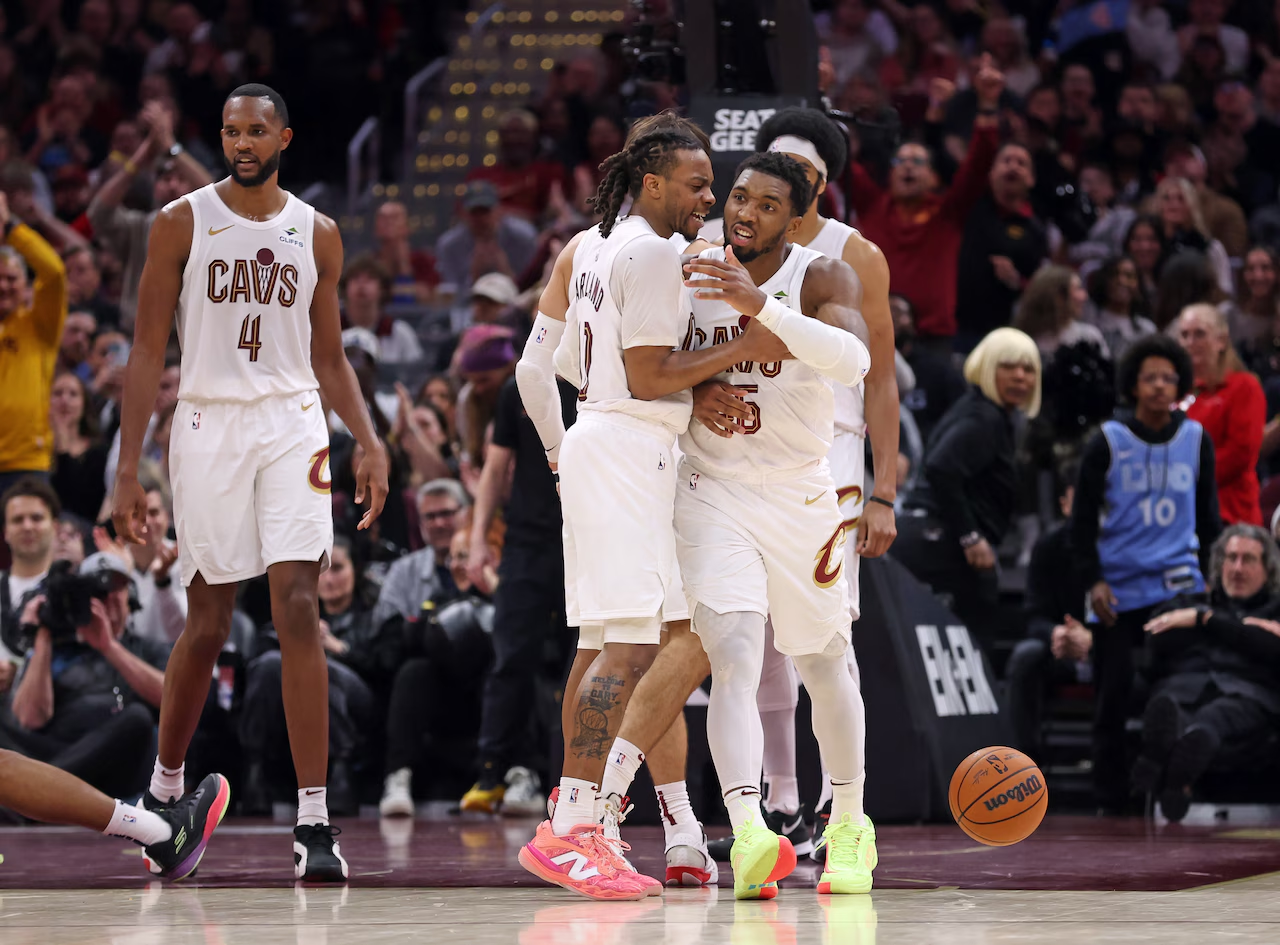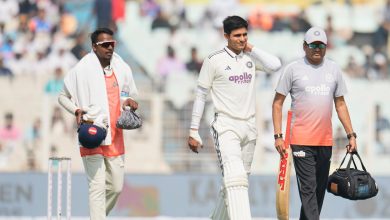Cavs get a real look at their ballhandling depth with backcourt depleted against Clippers

CLEVELAND, Ohio — Eighteen games into the season, the Cavs are still dealing with injuries but Sunday’s game against the Clippers gives Cleveland an opportunity to continue building trust in an area that devastated them in last year’s postseason.
When the Pacers heated up the floor, pressuring for 94 feet and being relentless at the point of attack, the Cavs ran out of ballhandlers. Possessions became constricted. The offense shrank. And the pressure on Donovan Mitchell and Darius Garland tightened until it felt like the Cavs were trying to breathe through a straw.
Sunday’s matchup will force the Cavs to focus on their options with the ball because they won’t have much choice.
Lonzo Ball (injury management), Craig Porter Jr. (hamstring), Sam Merrill (hand) and Max Strus (foot) are all out.
But instead of tightening the rotation or placing heavier burdens on Mitchell and Garland, Kenny Atkinson will lean into the philosophy he’s been building since training camp: shared initiation, shared responsibility, shared pressure.
This game becomes a test of that mission.
How to watch the Cavs: See how to watch the Cavs games with this handy game-by-game TV schedule.
Tyrese Proctor’s moment arrives
The first beneficiary is rookie guard Tyrese Proctor, who will likely see his biggest workload of the young season. The staff trusts his poise, and they know his handle gives them a release valve when opponents send extra bodies at their stars.
“Everybody’s got to step up, and Tyrese is part of that,” Atkinson said. “Tyrese is gonna play tonight. We’re going to need his ball-handling. We just can’t rely on our three big guys.”
Proctor’s decision-making, especially in early offense and against pressure, becomes an early-season litmus test for where he could be for a playoff run. His shot will come in the flow of the offense, and he shouldn’t hunt it. His focus should be on getting Cleveland organized.
Jaylon Tyson taps back into his past
The more intriguing subplot involves rising role player Jaylon Tyson.
At Cal, he had the ball constantly. In Cleveland, he’s reshaped himself into a clean catch-and-shoot threat, a willing defender, a role player thriving in simplicity.
But Sunday, the Cavs need him to be unpredictable for defenders while giving his teammates a steady hand to rely on.
“Jaylon made a couple of nice plays last game — where we don’t want that [to be] the first part of his game — but when things break down or he’s got to make a play, he’s got the ability to do it.”
This is where Cleveland’s developmental vision shows up. Tyson can put the ball on the floor, can initiate pick-and-roll, can hit the weakside corner triple. Those were staples of his college profile. The Cavs just haven’t needed him to do it.
Until now.
“He was a ball handler, playmaker,” Atkinson said after the Cavs’ win over the Pacers on Friday about Tyson’s role in college. “I think he’s a really interesting case of a guy just transforming his game from what he did at Cal to how we’ve asked him to play, the role we’ve asked him to play.
“Might be one of the biggest transformations from what a guy’s role was in college to completely kind of changing for what we need, for what this team needs, because those playmaking abilities didn’t go away. He can do that stuff … and then they trust him to make those passes to them when they pack the paint. He’s knocking those shots down. It’s huge for us.”
Sunday becomes a chance for Tyson to merge both versions of himself: the scorer-playmaker from Cal and the connective, floor-spacing wing Cleveland has shaped.
Evan Mobley and De’Andre Hunter as pressure valves
The Cavs’ stars will still head the operation, but they can’t be the only source of stability. That’s where Evan Mobley and De’Andre Hunter come in.
Atkinson has quietly been increasing Hunter’s usage, especially with the second unit, giving him more reps as a driver and short-clock creator. His strength and balance make him one of Cleveland’s best options against aggressive defense.
“Getting him his usage up a little, trying to get him with that second unit a little more so he can be a little more comfortable in that scoring role,” Atkinson said about Hunter. “That’s been intentional and that’s helped him.”
Mobley, meanwhile, will have chances to bring the ball up the floor while also operating from the elbow and free-throw line extended in the halfcourt, serving as a release point whenever the Clippers try to trap the ball. His ability to see over the defense and attack from the middle of the floor gives Cleveland structure when pressure disrupts the perimeter.
“We all know he’s a really good passer, so when he gets in the pocket and has all that space, he can just do whatever he wants with it,” Darius Garland said about Mobley.
This multitude of options is meant to distribute responsibility so that no player carries too much of the load. It’s about giving Mitchell oxygen, giving Garland options, and giving the Clippers fewer pressure points to attack.
Without half their guard depth, the Cavs will be forced to reveal how well Atkinson’s system is taking hold.
But this was the plan all along — not a crisis, but an opportunity.
To build an offense that doesn’t crack when the heat comes. To empower players who weren’t asked to dribble last year. To give Mitchell and Garland freedom instead of burden.
The Cavs weren’t prepared for Indiana’s full-court pressure last spring. On Sunday, Cleveland will get a chance to display how far the team has come in making sure that won’t happen again.
If you purchase a product or register for an account through a link on our site, we may receive compensation. By using this site, you consent to our User Agreement and agree that your clicks, interactions, and personal information may be collected, recorded, and/or stored by us and social media and other third-party partners in accordance with our Privacy Policy.





